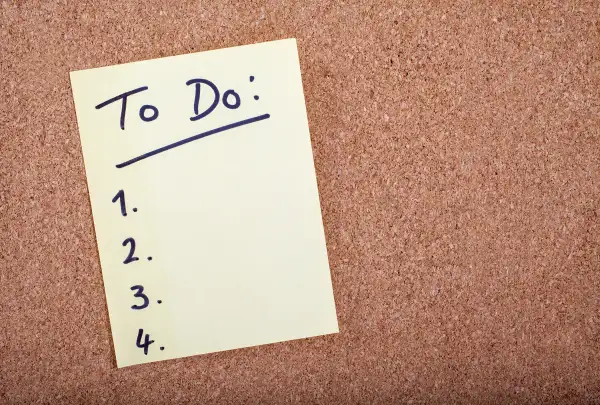Improve Your Financial Life Automatically With A Simple Checklist

The bills accumulate. You vow to plow through them but never seem to have the time. Then the late fees start adding up and maybe your credit score gets dinged.
Ever been there? There's a way to avoid this problem: Automate at least some of the bill-paying process -- and other pieces of your financial life while you're at it. Banks have been improving their digital offerings and nudging customers toward them because they're cheaper than paper, but there's a benefit for you, too: Once you set up online or mobile banking, paying bills can be fast and almost painless.
Here's your financial automation checklist:
Direct deposit. Start by signing up for direct deposit at work so your paychecks land in your bank account automatically. It makes the money available sooner and saves you all those trips to the ATM. Plus, many financial institutions will waive their monthly checking fees for customers who use direct deposit. (Some banks have minimum thresholds, so check to make sure you qualify.)
Bill payments. This is the next logical step. To set up electronic bill payments via your bank's website, you'll need your account number at each company you want to pay and likely its address too. With bills that fluctuate each month, or if you prefer to initiate each payment yourself, all you'll need to do is go online, enter the amount of the payment, and the rest happens electronically.
With bills that are identical each month, like a mortgage, set up automatic payments. Just be certain that you'll always have enough in your account to cover it. If you're short, the bill may still get paid on time, but you'll be hit with a $30 or $35 overdraft fee. If you tend to live paycheck to paycheck, add email or text alerts if your bank account balance drops below the amount scheduled to be withdrawn.
After the first bill for any new vendor is scheduled to be paid, verify that the transaction went as planned.
Most checking accounts don't charge for online bill-paying; some prepaid debit accounts do. If you don't want to go through your bank, you can go to websites of the vendors you pay every month and set up automatic payments through your credit card. This lets you consolidate numerous monthly bills into a single credit card statement.
Budgeting. If you use budgeting software like Quicken, or a budgeting website or app like Mint, link your checking account and credit card accounts so all your bills and expenses will be categorized and easy to track in one place.
Savings. Most companies that offer a retirement savings program like a 401(k) make it easy to divert a portion of each paycheck into these accounts automatically. (Increasingly, in fact, this is the default option for new employees.)
Don't pass up this easy and valuable savings tool. If you commit, say, 10% of your pre-tax salary to retirement savings, you won't pay income taxes on it. Your company may match your contributions. And when you don't see the money in your account, you tend not to miss it -- and you'll probably get used to living on less.
Even if you don't work for a company with a 401(k) plan, you can set up automatic transfers from your checking or savings account into a tax-advantaged account like an IRA or Roth IRA, a 529 college savings plan, a brokerage account, a vacation account, house fund or any other savings goal or vehicle you have.
Auto-escalate your savings. Within many company 401(k) programs, you can instruct the plan provider to automatically increase your savings rate by an amount you choose (usually between 1% and 3%) on the same day every year. Gradually increasing the amount you save this way can add substantially to your savings without taking a big hit all at once.
Portfolio rebalancing. Smart asset allocation -- that is, dividing your investment portfolio among different types of assets -- is an important stage on the road to wealth. And once you determine the right mix for you, it's important to maintain those proportions over the long-term, even as market fluctuations throw them out of whack.
Periodically "rebalancing" your portfolio is the answer -- and many investment companies now offer the option of automatic, periodic adjustments back to your desired allocation.